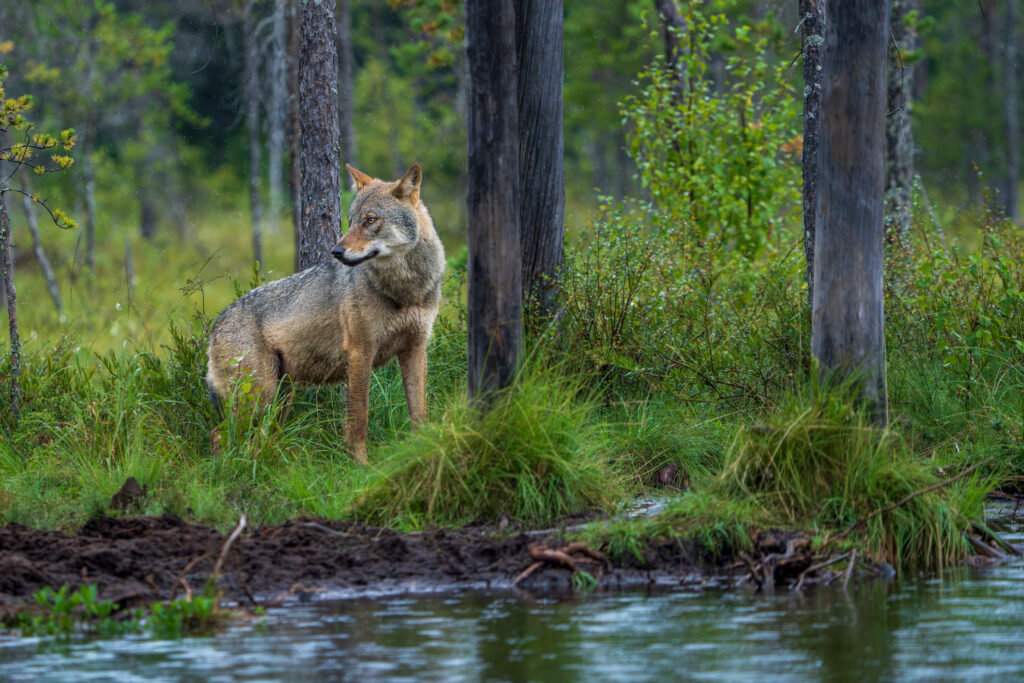On Tuesday 9/4, researchers Phil Miller (IUCN SSC Conservation Planning Specialist Group) and Nicolas Dussex (Norwegian University of Science and Technology), presented their study on the Minimum Viable Population (MVP) of the wolf in Scandinavia. The study was ordered last year by Sweden’s government, which wants to lower the Favorable Conservation Status (FCS) for the Swedish wolf population from 300 individuals to 170 – 270. According to the report, this is very doubtful.
Two different reference values with different outcomes
The international researchers presented their studiy at a seminar at the Swedish Environmental Protection Agency, where the chairman of the Swedish Carnivore Association, Magnus Orrebrant, was present.
-The researchers’ task was to study the Minimum Viable Population (MVP) level, which is a theoretical minimum number. Based on the MVP, the Swedish Environmental Protection Agency then produces a proposal for favorable conservation status (FCS) that contains several different aspects. The researchers were very clear that the FCS needs to be significantly higher than the MVP, in order to ensure the wolf’s long-term survival in Sweden, states Magnus Orrebrant.
– Using two different theoretical models, the researchers studied the effects of immigration to different extents and how it affects the wolf population’s genetics. Based on the conditions that an immigrated wolf reaches the isolated wolf population in Scandinavia every three years, theoretically the smallest possible wolf population (MVP) in the autumn could be 170 wolves, 40 in Norway and 130 in Sweden. Grave in the analysis is that it was assumed that the Swedish wolf population is part of a larger population, including parts of the Russian population. This is so that the wolf population in Sweden can be smaller without risking critical levels of inbreeding. But according to the so-called Tapiola judgment of 2019, an EU country can not rely on unsafe populations of animals outside the EU.
In order to maintain FCS, a significantly larger number is thus needed. In 2015, favorable conservation status was determined at 300 wolves with similar starting points, says Magnus Orrebrant, and believes that the researchers’ report therefore shows that the conditions have hardly changed since then.
Difficult to reduce the size of the wolf population
– I do not see that the research reports will pave the way for the lowering of the wolf population that the government wants, without seriously endangering the health of the wolf population. The genetic health of the Scandinavian wolves is today much worse off than in 2015 with, for example, a higher degree of cryptorcism, which affects reproduction. This instead suggests that the level for Favourable Conservation Status must now be higher than 300 wolves, not lower. If the government gets the bad idea to take a chance at trying to lower the population, in order to fulfill its election promises, the EU will very likely act against Sweden.
The Swedish Environmental Protection Agency must now present its conclusions about the research reports regarding MVP to the government, in June 2024. The Swedish Environmental Protection Agency will then draw up a proposal for FAS, which the government must approve and then report to the EU in 2025. The conditions for wolf hunting in 2025 will therefore not be affected by a possible new reference value for FCS.
-We will of course do what we can to protect the long-term survival of the Swedish wolf population from political populist decisions, concludes Magnus Orrebrant.
Links
